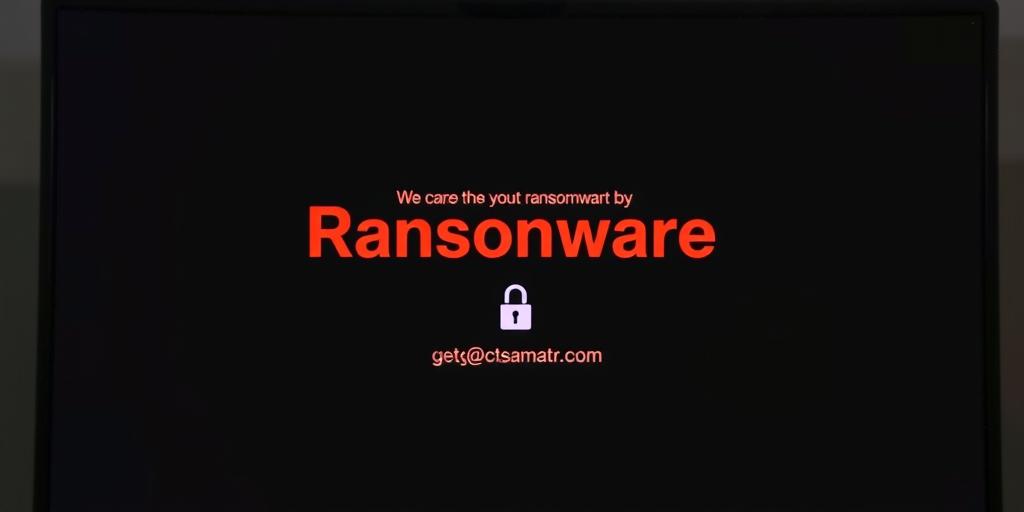Ransomware attacks are a growing cybersecurity threat that can cripple businesses and individuals alike. Understanding how these attacks work is crucial for protecting yourself and your data. This blog post will delve into the mechanics of ransomware attacks, exploring the various stages of an attack, the methods used to spread ransomware, and the different types of ransomware that exist. We’ll also discuss effective ways to prevent and respond to these attacks.
Understanding Ransomware Attacks
What is Ransomware?
Ransomware is a type of malicious software designed to encrypt your files and hold them hostage until you pay a ransom. The attackers demand payment, typically in cryptocurrency like Bitcoin, to provide a decryption key that restores your files. The goal is to extort money from victims by exploiting their fear of losing access to their essential data.
How Ransomware Spreads
Ransomware can spread through various methods, making it a persistent threat.
Phishing Emails
Phishing emails are a common technique used to spread ransomware. These emails often disguise themselves as legitimate communications, such as invoices, bank statements, or notifications, and contain malicious attachments or links. When a user clicks on these links or opens the attachments, they unknowingly download the ransomware onto their device.
Malicious Websites
Visiting compromised websites can also lead to ransomware infections. These websites may host malicious scripts that exploit vulnerabilities in your web browser or operating system to download ransomware.
Exploiting Vulnerabilities
Cybercriminals often target vulnerabilities in software applications, operating systems, and networks to spread ransomware. These vulnerabilities can be exploited through various methods, including drive-by downloads, exploits, and social engineering.
Types of Ransomware
Ransomware can be categorized into different types based on their attack mechanisms and the methods used to block access to data.
Crypto-Ransomware
Crypto-ransomware uses strong encryption algorithms to encrypt your files, making them inaccessible without the decryption key. This is the most common type of ransomware, and it’s often very effective in rendering data unusable.
Locker Ransomware
Locker ransomware blocks access to your computer or specific files by locking them or modifying system settings. It may also display a ransom message demanding payment to unlock the device.
DoS Ransomware
DoS (Denial of Service) ransomware disrupts your computer’s functionality by launching a distributed denial of service attack. This attack overwhelms your system with requests, making it impossible to access your data or use your device.
The Ransomware Attack Lifecycle
The ransomware attack lifecycle can be broken down into several stages, from the initial infection to the payment and data recovery.
Initial Infection
The attack lifecycle begins with the initial infection of the victim’s device. This can occur through various methods, as discussed earlier, including phishing emails, malicious websites, or exploiting vulnerabilities.
Data Encryption
Once the ransomware is installed on the victim’s device, it begins the process of encrypting files. This process can be very quick, and it can often target important files and folders, such as documents, photos, videos, and backups.
Ransom Demand
After encrypting the data, the ransomware will display a ransom message demanding payment. The message typically includes instructions on how to pay the ransom, the amount of money requested, and a deadline for payment.
Payment and Data Recovery
If the victim decides to pay the ransom, they will usually need to transfer the money to a cryptocurrency wallet controlled by the attackers. Once the payment is confirmed, the attackers will provide a decryption key that the victim can use to recover their encrypted files. However, there is no guarantee that the attackers will provide the decryption key, even after payment.
Protecting Yourself from Ransomware
While ransomware can be a serious threat, several steps can be taken to protect yourself from these attacks.
Regular Backups
Creating regular backups of your important data is essential for ransomware protection. Backups should be stored offline or in a secure cloud storage service that is not accessible to the ransomware.
Strong Passwords and Multi-Factor Authentication
Using strong passwords and enabling multi-factor authentication (MFA) for your online accounts can significantly reduce the risk of ransomware infections. Strong passwords should be unique for each account and include a combination of uppercase and lowercase letters, numbers, and symbols.
Software Updates and Security Patches
Keeping your software up to date with the latest security patches is critical to protect your device from vulnerabilities that attackers can exploit. Software updates often include security fixes that patch vulnerabilities, making your device more resistant to ransomware attacks.
Employee Training and Awareness
Educating your employees about ransomware threats and how to identify and avoid them is crucial. This training should cover the basics of ransomware, how it spreads, and how to recognize and report suspicious emails, websites, and attachments.
Responding to a Ransomware Attack
If your device or network has been infected with ransomware, it’s essential to act quickly and decisively.
Disconnect from the Network
The first step is to disconnect your device from the network to prevent the ransomware from spreading to other devices on your network. If the ransomware is connected to the internet, it can continue to spread and encrypt more files.
Contact Law Enforcement
Contact your local law enforcement agency to report the ransomware attack. Law enforcement can investigate the attack and help you recover your data.
Do Not Pay the Ransom (Unless Absolutely Necessary)
Paying the ransom is often not recommended as it encourages further attacks and does not guarantee the recovery of your data. However, there may be situations where paying the ransom is the only option, especially if the data is critical and there is no way to recover it from backups.
Data Recovery and Restoration
Once the ransomware is contained, you can begin the process of recovering your data. If you have backups, you can restore your data from these backups. If you don’t have backups, you may need to try other data recovery methods, such as using data recovery software or contacting a data recovery specialist.
Key Takeaways
Ransomware is a significant threat to individuals and businesses. It’s essential to understand how ransomware attacks work, the methods used to spread ransomware, and the different types of ransomware that exist. By implementing effective preventative measures and responding appropriately to attacks, you can significantly reduce the risk of falling victim to ransomware.
Staying ahead of the threat is crucial in the ever-evolving world of cybercrime. Keep yourself informed about the latest ransomware trends, security best practices, and emerging threats. By staying vigilant and proactive, you can protect yourself and your data from ransomware attacks.




